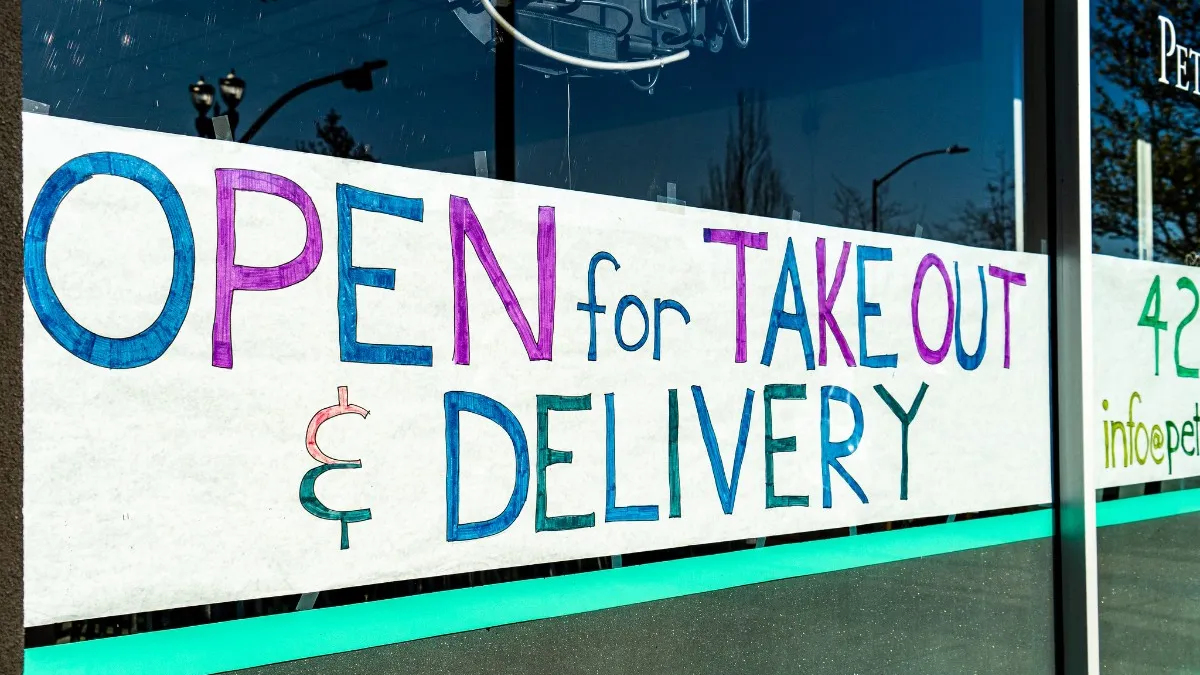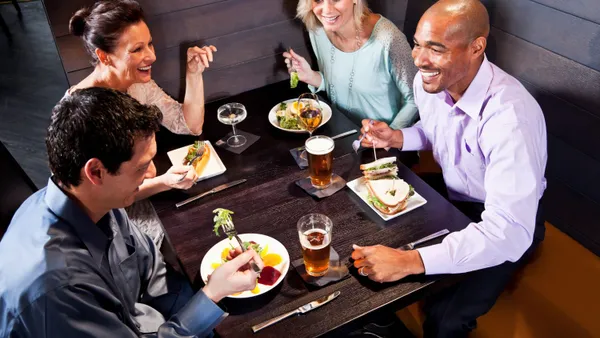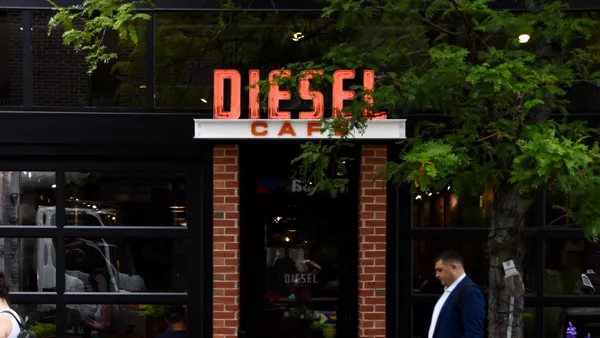Dive Brief:
- Forty-seven percent of restaurants said their transition to online ordering has been their biggest challenge during the COVID-19 crisis, according to an Upserve survey of 421 customers shared with Restaurant Dive. This is particularly true for the majority of fine dining and upscale restaurants (about 60% for both) that didn’t offer online ordering prior to the novel coronavirus outbreak.
- Other survival tactics include paring down their menus, stepping up their social media presence, turning to third-party delivery, adding in-house delivery and selling pantry items from their restaurants.
- Most restaurants, or 64%, are either slightly or very optimistic about the future despite the challenges presented by the COVID-19 pandemic. Fast casual/quick-service restaurants are the most optimistic, while bar operators are the least.
Dive Insight:
There’s a reason limited-service operators are the most optimistic. Their business models already support the off-premise environment created by the crisis, either through drive-thrus, pickup or delivery with online ordering infrastructure facilitating the latter two channels.
However, even though online ordering has become table stakes in this environment, it’s not easy to transition to online ordering — as fine dining and upscale restaurants show. Even fast casual operators (42%) admit that a pivot to this new business model was a challenge. The shift requires seamless technology and tech investments, including an updated point-of-sale system, which is a hard commitment when sales are hemorrhaging and operators are just trying to stay afloat. Online orders also change the operating cadence in the kitchen.
Still, the investment has especially proven its return in these past six months. Upserve’s customers report a nearly 783% increase in online order sales volume growth during the crisis as of July, and this number is expected to grow as the weather starts to cool and outdoor dining options go away. One look at the performance of Wingstop during this crisis also provides somewhat of a case study about online ordering and its ability to insulate brands during this time. The company reported Q2 earnings Wednesday, which included a 32% jump in domestic same-store sales, facilitated in large part by its digital sales, which made up 64% of sales during the quarter.
The accelerated habit of online ordering has led to another pandemic trend: Sixty-nine percent of restaurants have trimmed their menu to make the fulfillment process even easier, according to Upserve. It’s no coincidence that Taco Bell removed several items from its menu around the same time it announced the enhancement of its mobile app. A number of other chains, including McDonald's, Denny's and IHOP, slimmed down their menus to enhance operations during the crisis as well.
Digital ordering seems to have a long-term viability, as customers grow used to the ease and convenience of the process. Dining room spending is also is likely to remain lower than pre-COVID-19 spending with customers wary of densely populated areas, McKinsey reports.
Online ordering may be the most effective solution to this crisis, but it’s not the only way restaurants have adapted. According to Upserve, 66% of operators stepped up their social media game to engage their customers more. Restaurants have also relied on third-party delivery (33%), started their own delivery services (20%) and have started to sell pantry items (24%). The third-party delivery partnerships are expected to grow as restaurants prepare for reopening: 53% said third-party apps will be the technology they will rely on most whenever those reopenings happen.













